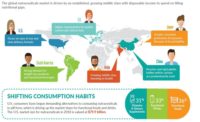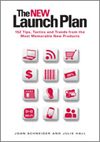Flexible packaging is proving to be one of the fastest growing segments in the rapidly changing print market. Driven by consumer demand for products that are easy to handle and store, minimize cost and maximize convenience, brands increasingly demand sophisticated flexible packaging solutions that increase their product’s shelf appeal with vibrant, high-quality graphics and maintain consistent brand intent across the regions they serve. To accomplish their goals, brands need print processes that not only deliver quality, but also speed and efficiency – two critical elements to ensuring products make it to the shelf on time, ready to beat out competitors.
Technology suppliers are innovating to enable printers and converters to respond to needs of their clients and, as a result, brands have been increasingly turning to flexographic printing to achieve their goals. Flexo accounts for the largest share of print revenue and volume in the printed packaging market, and according to a Smithers Pira report (Future of Global Flexible Packaging to 2020), the global market for flexible packaging is projected to grow 18 percent by 2020. With competition from gravure, and the media attention on digital printing developments, flexo doesn’t always get its fair share of the industry spotlight, but it has stepped up its game to meet the growing demands of brand owners and has become a strong competitor in the market.
Flexography’s innate strength lies in its ability to print high-quality graphics cost effectively on a wide variety of substrates and with the widest range of ink types. Over the last decade, it has made the transition from basic print process to one where the most advanced flexo printers are now matching gravure and offset in print quality, and winning on cost effectiveness and turnaround times. Brands no longer have to choose quality over time to market. Leading flexo printers around the world have demonstrated to their global brand clients that they can successfully take flexo from 120 or 133 lpi to print regularly at 150 lpi and drive efficiencies in the process. Many are taking that further to 175 lpi or beyond.
So how can flexo take advantage of this newfound demand to drive continued growth and transformation across the flexible packaging industry? We must continue to make strides in printing innovation. We as an industry must invest in R&D to develop the technologies that will redefine a new era of printed packaging, where we can deliver solutions to the most pressing problems today’s brand owners face.
Taking a long-term view, the brands will ultimately be driven by the need to be completely conscious of the environment and the safety of the consumer. As an industry, we must be ready to respond and deliver all the capabilities we enable today and do it with environmental stewardship. It’s about becoming an even better caretaker, advocate and partner to the industry and to the environment, which means developing printing solutions that are truly sustainable. This is not a simple task. It requires innovation and collaboration across the entire print ecosystem. The good news is that many leading suppliers are already working on various aspects of technology that ultimately will take us in that direction.
Flexo is helping printers deliver high-quality, innovative and new packaging applications that will continue to push standards. It is imperative that we remain innovative and adaptable in order to meet the demanding needs of tomorrow’s packaging market. It is equally as important that brand owners put their trust in the hands of flexo printers and converters with access to leading-edge technology to stay ahead of the curve and be able to thrive in this ever-changing landscape. FP
Kodak- www.kodak.com






